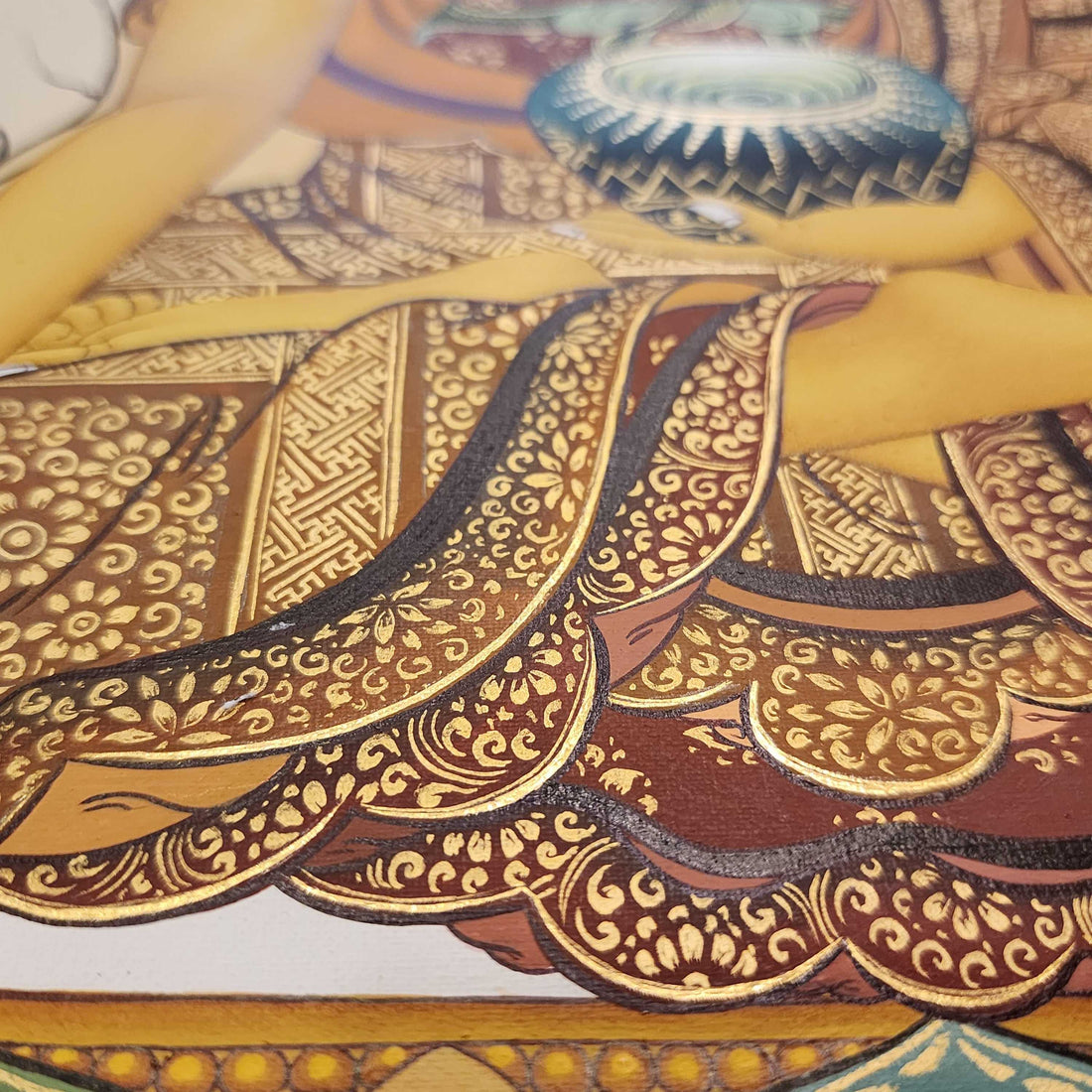
Mandala Thangkas: Symbolism and Sacred Geometry
Share
Introduction
Mandala Thangkas are among the most profound forms of sacred art. More than intricate patterns, mandalas represent the universe, guiding practitioners on their path to spiritual awakening through meditation and visualization.
What is a Mandala?
— The word “mandala” means “circle” in Sanskrit.
— It symbolizes the cosmos, with a central point representing ultimate truth and enlightenment.
Structure of a Mandala Thangka
— Center: Usually features a Buddha or deity, symbolizing the enlightened mind.
— Layers of Circles and Squares: Represent the universe and the path toward liberation.
— Four Gates: Openings that symbolize the entry into higher wisdom.
Symbolism in Mandala Colors
— White: Purity and wisdom.
— Red: Energy and transformation.
— Blue: Infinite compassion.
— Green: Active protection.
— Yellow/Gold: Prosperity and enlightenment.
Use in Meditation
— Practitioners visualize themselves entering the mandala.
— This journey represents moving closer to enlightenment.
— Focus on symmetry cultivates mindfulness and concentration.
Cultural and Spiritual Importance
— Mandala Thangkas are used in rituals, empowerment ceremonies, and festivals.
— They serve as sacred maps to guide practitioners inward, toward spiritual truth.
Conclusion
Mandala Thangkas are not only masterpieces of art but also tools for meditation and enlightenment. Their sacred geometry continues to inspire practitioners and collectors worldwide.
